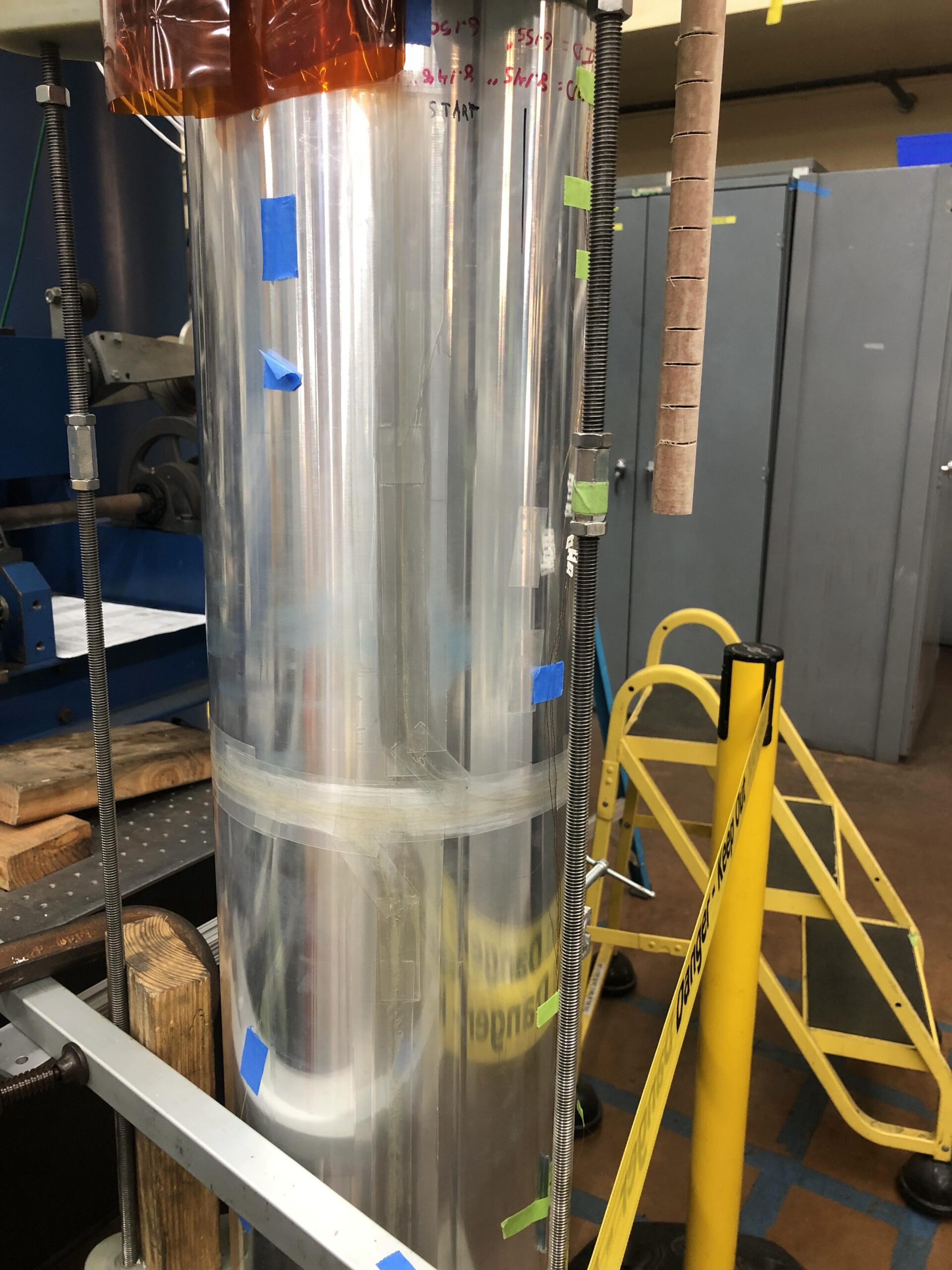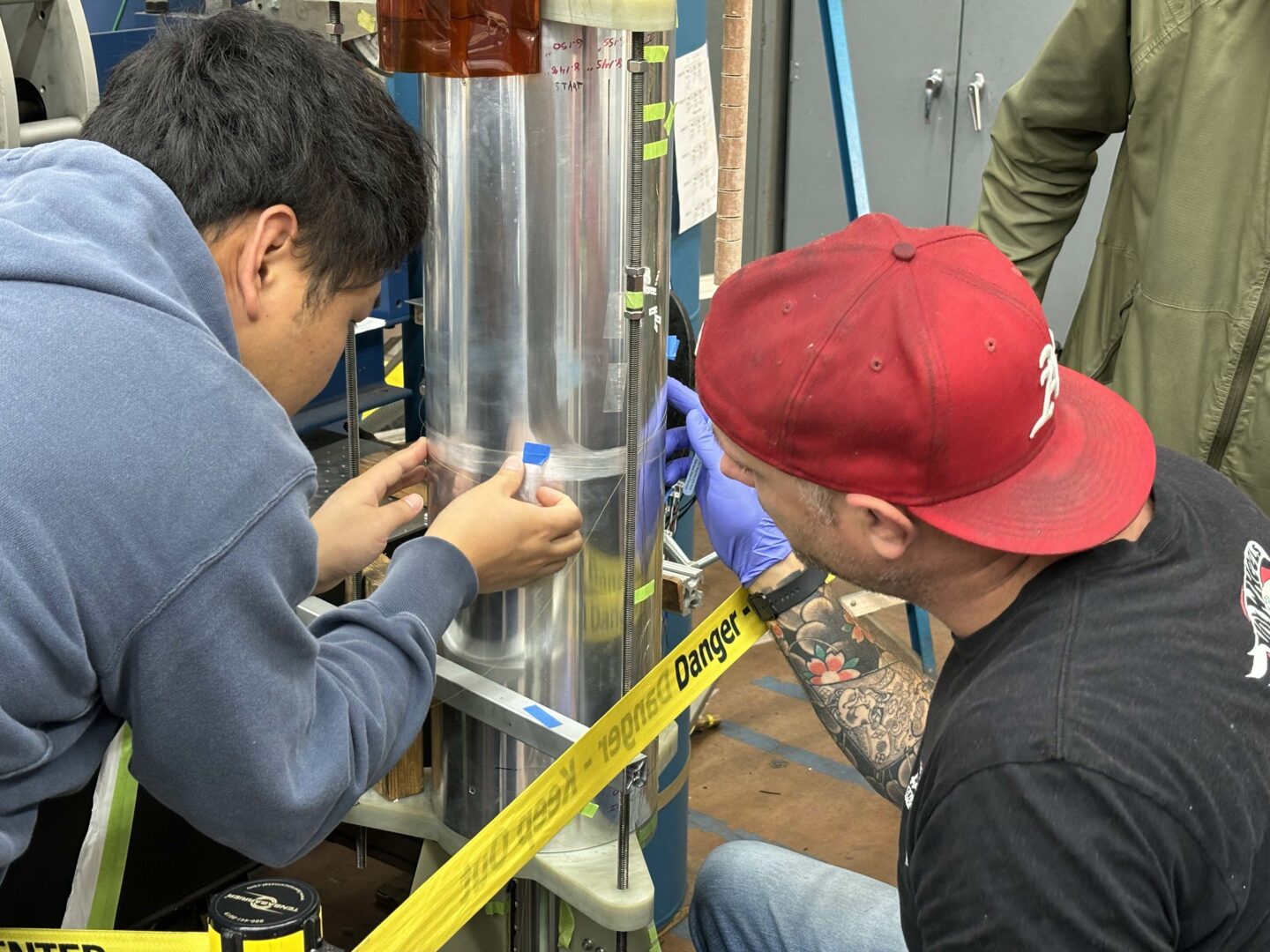The sun’s core serves as a natural fusion reactor, constantly fusing hydrogen atoms and generating enough energy to heat Earth over 92 million miles away. Replicating fusion reactions on Earth turns out to be extremely difficult, though, due to technology limitations and gigantic energy requirements. Since fusion fuel could help the U.S. easily exceed its energy demand, scientists have been studying how to address these obstacles to generate the fusion energy that could secure the nation’s future energy security and bring energy abundance to the world.
A team of Berkeley Lab scientists led by Energy Geosciences Division (EGD) Research Scientist Linqing Luo and Accelerator Technology and Applied Physics Division (ATAP) Staff Scientist Xiaorong Wang found that distributed fiber-optic sensing (DFOS)–a technology that uses tiny fibers to monitor a material’s physical condition–can help scientists better understand the functioning and limitations of high-temperature superconductors (HTS), which are critical to developing successful and safe fusion reactors and particle accelerators. Their findings have been recently published in a study in Superconductor Science and Technology.
This study is a cross-divisional, interdisciplinary collaboration between EGD and ATAP at Berkeley Lab. ATAP is advancing HTS to enhance fusion energy and accelerator technologies, and EGD is developing DFOS technologies to support scientific research. This partnership focuses on developing DFOS for HTS magnets, which are capable of generating intense magnetic fields essential for magnetic confinement fusion reactors and progressing the development of fusion energy.
“HTS have the potential to enable more energy-efficient and cost-effective fusion facilities and particle accelerators,” explained EGD Research Scientist Linqing Luo, lead author of the publication. “Studying their behavior and limitations can help us better understand these materials that play a vital role in the success and safety of fusion. Our study shows DFOS is a great way to do that.”
The important role of HTS in nuclear energy and particle accelerators
Scientists contain fusion reactions using superconductors–materials that can, at extremely cold temperatures (below negative 250 degrees Fahrenheit), conduct electricity with near 100% efficiency and produce powerful magnetic fields. High-temperature superconductors operate the same way, but generate a more intense magnetic field compared to low-temperature superconductors, and at higher temperatures, which lowers the cost and energy needed for cooling.
Because fusing atoms requires a large amount of energy, these reactions occur at hundreds of millions of degrees Fahrenheit. At temperatures this extreme, matter exists in the fourth state: the plasma state, which is a gas consisting of free-flowing electrons expelled from extremely heated atoms and ions, which are atoms that have lost or gained electrons. HTS can help keep this extremely hot and energized plasma contained within their powerful magnetic fields, but more efficient ways of monitoring their performance are needed to effectively control fusion reactions.
“Magnetically confined fusion is one of the most promising approaches to fusion energy production, and high-temperature superconductors may enable compact, high-field magnet advancements. This can pave the way for commercial solutions, which could revolutionize the world’s energy production” said ATAP Staff Scientist Xiaorong Wang, who led the development, fabrication, and testing of the HTS magnet at the heart of the study.
In addition to compact fusion reactors, HTS magnets are being developed to enable high-energy particle accelerators, which also rely on intense magnetic fields to guide and focus particles like electrons and protons to study fundamental physics, forces, and the structure of matter. Studying this HTS magnet technology and how it can be optimized can accelerate technological solutions needed for both fusion and high-energy physics applications.
Fiber-optic sensing to better understand HTS

The REBCO magnet after preparation, ready for testing at various temperatures as cold as negative 450 degrees Fahrenheit. Photo Courtesy of Linqing Luo.
To develop HTS magnet technology, the team developed a magnet using REBCO, a high-temperature superconductor made of rare-earth barium copper oxide. The team used fiber-optic sensing to study the stress and strain of the HTS magnet at temperatures as low as negative 450 degrees Fahrenheit, along with how the material transitioned to a superconducting state as it cooled.
“DFOS is a promising method of studying and optimizing HTS because this technology can capture changes on a minute scale and operate at the extremely cold temperatures needed for HTS,” explained EGD Staff Scientist Yuxin Wu, a leader of the study and co-author of the paper.
“Because DFOS can capture minute changes in strain or temperature at these operating conditions, it enables real-time, localized monitoring of superconducting materials with high spatial resolution,” Wu continued. “Evaluating this monitoring strategy in HTS environments not only improves our ability to confine plasma in fusion reactors, but also helps us detect and address potential issues in superconducting magnets and fusion reactor systems before they escalate into serious or cost-intensive failures.”
The scientists embedded different kinds of thin fibers onto REBCO materials that pulse light waves, which scatter against the magnets and reveal information about the physical state, properties, stress, and strain of the material. They found that DFOS showed minimal signal loss during tests in extremely cold temperatures, meaning that it could consistently operate and monitor the physical properties of the REBCO magnet. The technology also effectively captured small temperature gradients and expected deformations.
The path forward for large-scale HTS applications
While DFOS demonstrated potential for HTS monitoring, the team noted several areas for further investigation to optimize the sensing method, such as how extremely cold temperatures impact the quality and lifespan of the technology, and how the installation methods onto REBCO magnets could be improved.
“Reliable monitoring of strain in high-temperature superconductors under operating conditions will be critical to safe system operation and integrity monitoring for future facilities,” said Soren Prestemon, ATAP Deputy for Technology and Director of the U.S. Magnet Development Program.
Berkeley Lab scientists offer a tool that could contribute to developing the efficiency and stability of fusion reactors and particle colliders, as DFOS demonstrates reliability in capturing small-scale, critical changes in conditions and function of high-temperature superconducting REBCO magnets. This work represents an essential step in improving fusion technologies and particle accelerators.


